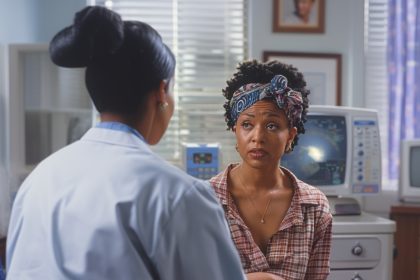That moment when someone mentions a blind person, what image pops into your mind? Probably someone in dark glasses navigating with a white cane, completely unable to perceive the world around them. But here’s the reality that most people don’t realize. Only about 15% of people classified as blind live in total darkness. The vast majority can actually see something, whether it’s light perception, shapes, or even blurry images. This disconnect between public perception and reality has real consequences for how we understand and support those with vision impairments.
What blindness actually means
Blindness exists on a spectrum far more complex than just “can see” versus “cannot see.” Most people with legal blindness inhabit a middle ground where some visual information gets through, but not enough for typical daily functioning without assistance.
For someone with partial vision, the world might appear as if you’re looking through a foggy shower door, trying to make out shapes and movements on the other side. Or perhaps it’s like viewing everything through a narrow straw, seeing only a tiny portion of the visual field at once. Some can detect bright colors but struggle with contrast, while others might see reasonably well in daylight but become functionally blind in dimmer conditions.
This residual vision, while limited, can be incredibly valuable. It might mean the difference between navigating with a cane versus without one, or between reading standard print with powerful magnification versus needing braille or audio alternatives. Even the ability to distinguish light from dark can provide crucial orientation cues that complete darkness doesn’t allow.
Understanding this reality helps explain why you might see someone using a white cane one moment and then appearing to look directly at something the next. They’re not “faking” their disability. They’re maximizing whatever visual information they can access while still needing tools to compensate for significant limitations.
The warning signs your vision might be at risk
Most vision loss doesn’t happen overnight. Instead, your eyes often send subtle distress signals long before major problems develop. Learning to recognize these warning signs could be the difference between preserving your sight and losing it.
Blurry vision that persists even with your current glasses might indicate developing cataracts or other progressive conditions. Don’t simply blame your prescription and wait for your next regular checkup. Unexpected changes warrant prompt attention.
Seeing wavy lines where straight lines should be represents one of the most serious warning signs. This distortion, particularly in your central vision, often signals macular degeneration, which can progress rapidly without treatment.
Struggling to see at night, especially when it’s a new development, isn’t just an inconvenience. Night blindness often serves as an early indicator of retinal problems or serious vitamin deficiencies that can eventually affect daytime vision as well.
Noticing reduced color intensity where reds don’t look quite as red or blues seem faded might signal optic nerve issues or the early stages of cataracts. Our color perception typically fades so gradually that many people adapt without realizing anything’s wrong until significant damage has occurred.
Even seemingly minor symptoms like occasional flashes of light or new floaters can sometimes indicate a retinal tear or detachment that requires immediate medical attention. What you dismiss as a curious visual oddity could actually be your retina waving a red flag.
The silent stealers of sight
Some of the most dangerous threats to vision earn their destructive power precisely because they damage your eyes so quietly. By understanding these silent sight stealers, you gain your best chance at stopping them before permanent damage occurs.
Diabetic retinopathy lurks as perhaps the most insidious threat. High blood sugar slowly damages the tiny blood vessels in your retina, often without causing noticeable symptoms until significant damage has occurred. By then, the condition has frequently progressed to a stage where some permanent vision loss becomes inevitable. Regular dilated eye exams become life-changing for anyone with diabetes.
Glaucoma earns its nickname as “the sneak thief of sight” because it typically begins by damaging your peripheral vision, which most people don’t monitor closely. Your brain compensates for these blind spots so effectively that you might lose significant vision before noticing any problem. By the time most people notice visual changes, permanent damage has already occurred.
Age-related macular degeneration often progresses gradually in its most common form, with central vision becoming increasingly blurry. The brain’s remarkable ability to adapt means many people compensate for significant vision loss before seeking help, missing the window for the most effective treatments.
High blood pressure silently damages blood vessels throughout your body, including the delicate vessels in your eyes. This damage can occur for years without symptoms before suddenly manifesting as vision problems that could have been prevented with better blood pressure control.
Breaking the cycle of late intervention
The tragedy of most vision loss lies in how much could have been prevented with earlier intervention. Understanding the barriers to early care helps us build better systems and habits to protect vision.
Fear keeps many people from seeking prompt care when vision changes occur. They worry about receiving devastating news or facing the prospect of vision loss, so they delay appointments hoping the problem will resolve itself. This natural but dangerous response often allows treatable conditions to progress beyond the point of recovery.
Cost concerns prevent others from seeking regular eye care, especially those without vision insurance. Yet the financial impact of preventive eye exams pales in comparison to the economic and quality-of-life costs of preventable blindness. Community resources and sliding-scale programs exist specifically to address this barrier.
Misunderstanding the importance of routine eye exams leads many people to skip them until problems develop. Unlike dental checkups or annual physicals, eye exams often fall off the preventive healthcare radar until vision noticeably changes. By then, opportunities for early intervention have often passed.
The gradual nature of most vision changes works against us psychologically. Like the proverbial frog in slowly heating water, we adapt to incremental vision loss without recognizing the danger until significant damage has occurred. Regular eye exams provide objective measurements that can detect changes too subtle for us to notice subjectively.
Living successfully with vision limitations
Despite the emphasis on prevention, some vision loss proves unavoidable. Understanding how people thrive despite these challenges offers important insights for anyone facing vision difficulties.
Rehabilitation services specifically designed for vision loss can transform outcomes. These specialized programs teach adaptive techniques for daily tasks, from cooking safely to navigating with a cane. Many people discover they can maintain independence through these targeted interventions focused on maximizing remaining vision and developing compensatory strategies.
Technology continues to revolutionize possibilities for those with limited vision. From smartphones with built-in screen readers to apps that identify objects and read text aloud, technological tools increasingly bridge the gap between visual limitations and full participation in daily life.
Support networks prove crucial for psychological adjustment. Connecting with others experiencing similar challenges provides both practical tips and emotional validation. The shared understanding that vision limitations don’t define one’s worth or capabilities becomes a powerful foundation for moving forward.
Attitude ultimately emerges as perhaps the most significant factor in successful adaptation. Those who approach vision changes with resilience and problem-solving mindsets typically discover new paths forward, even as they acknowledge the very real challenges and occasional frustrations of navigating a world designed primarily for those with full vision.
The bottom line
Blindness rarely means complete darkness. Understanding the spectrum of visual impairment helps create more accurate perceptions and better support systems for those experiencing vision challenges. More importantly, recognizing the early warning signs of eye disease and understanding prevention strategies gives everyone the best chance at maintaining vision throughout life.
Your eyes deserve proactive attention and protection. Regular comprehensive eye exams, prompt response to vision changes, and lifestyle choices that support eye health represent your best defense against preventable vision loss. The eyes may be windows to the soul, but they’re also irreplaceable gateways to experiencing the visual richness of the world around us. That’s worth protecting with everything we’ve got.

















